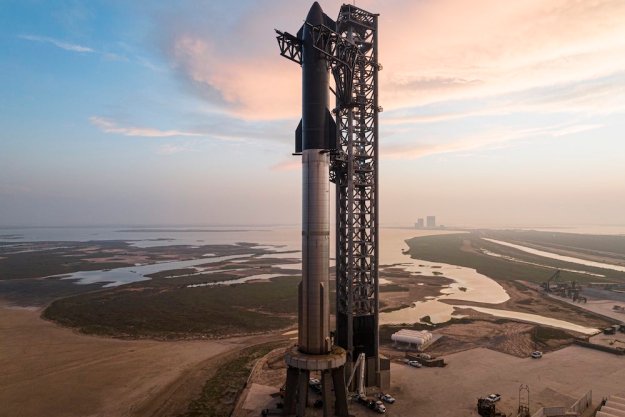SpaceX’s Elon Musk isn’t the only high-profile CEO that’s dead-set on reaching outer space. As you may or may not be aware, Amazon founder Jeff Bezos is in the space race as well, and earlier this week his burgeoning aerospace company Blue Origin successfully launched its first suborbital rocket.
“Today we flew the first developmental test flight of our New Shepard space vehicle,” the company said in a press release. “Our 110,000-lbf thrust liquid hydrogen, liquid oxygen BE-3 engine worked flawlessly, powering New Shepard through Mach 3 to its planned test altitude of 307,000 feet. Guidance, navigation and control was nominal throughout max Q and all of ascent. The in-space separation of the crew capsule from the propulsion module was perfect.”
But it didn’t quite go off without a hitch. Liftoff and ascent went swimmingly, and the crew capsule was safely returned to Earth, but Blue Origin was unable to retrieve the New Shepard’s propulsion module on descent. Much like SpaceX, Blue Origin is on a mission to develop rockets that can be landed safely and reused for subsequent missions — a feat that would dramatically decrease the cost of space travel.
The New Shepard’s first stage is designed to be fully reusable, and touch down with same vertical takeoff/vertical landing (VTVL) technique that SpaceX uses for it’s Falcon 9 rockets, but unfortunately the company failed to retrieve the thruster module due to an unexpected loss of pressure in the rocket’s hydraulic system.
Let’s not forget, however, that this was the company’s first attempt. According to a statement from Bezos, Blue Origin has “already been in work for some time on an improved hydraulic system,” and that “assembly of propulsion module serial numbers 2 and 3 is already underway.”
Toward the end of his statement, Bezos went on to mention that the company also has plans for an even bigger rocket. “We’re already designing New Shepard’s sibling, her Very Big Brother — an orbital launch vehicle that is many times New Shepard’s size and is powered by our 550,000-lbf thrust liquefied natural gas, liquid oxygen BE-4 engine,” he said.
Looks like Blue Origin might just give SpaceX a run for its money.
Editors' Recommendations
- SpaceX all set for a record-breaking rocket launch on Friday
- Five rocket launches to look out for in 2024
- Jeff Bezos’ Blue Origin to make first rocket flight since 2022 explosion
- Elon Musk declares SpaceX’s mighty Starship rocket ready for launch
- Blue Origin wants to launch rockets from new site outside U.S.




